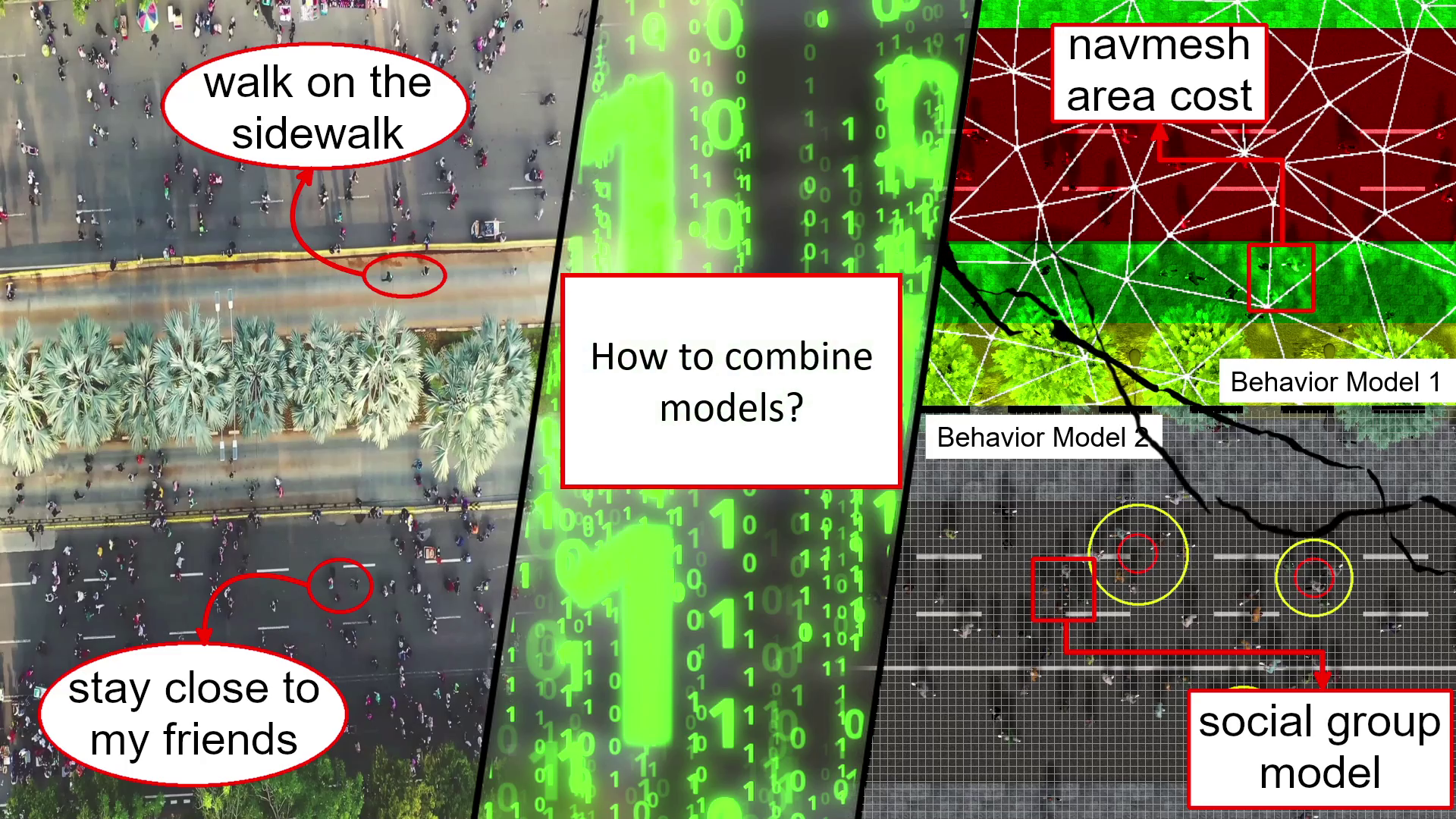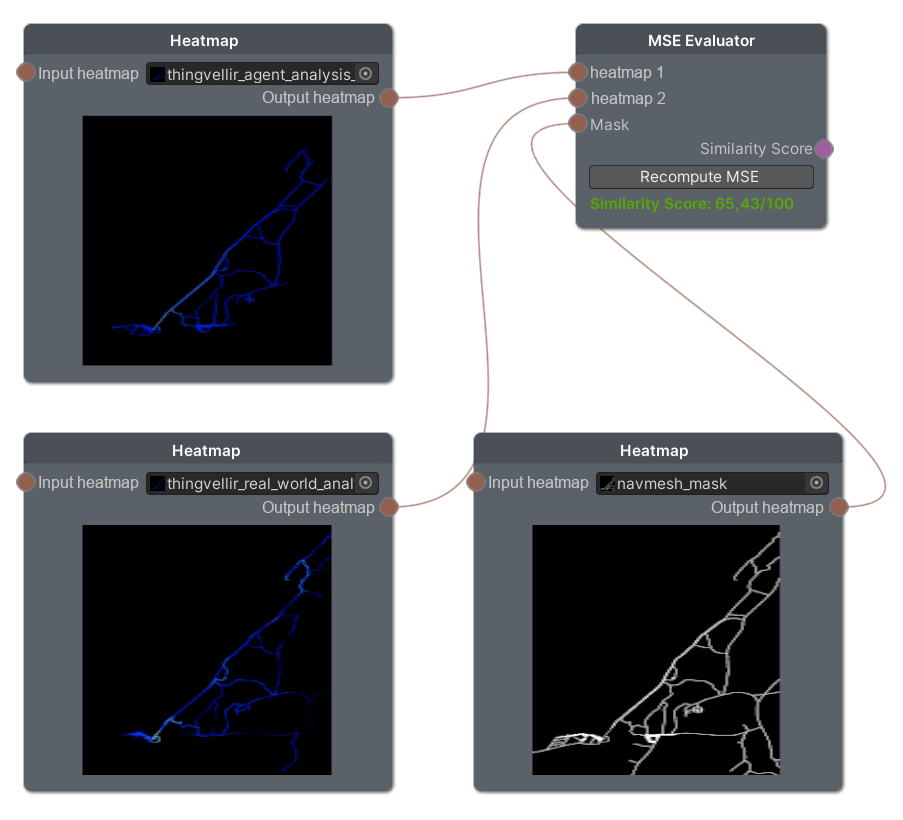Agora Crowd Simulation Framework


Crowd simulation is centered around modeling the movements and behaviors of large groups of people. Its importance is evident in domains such as urban planning, safety, and entertainment. In these areas, the presence of virtual agents exhibiting realistic behavior amplifies the quality and depth of the simulations.
The Challenge
Yet, delving into the intricacies of human behavior poses a distinctive challenge. Traditional computational models, often developed in isolation, are based on varied technology stacks. This makes them not only challenging to compare but also difficult to merge. Recognizing this complexity, there emerged a need for an innovative approach.
The Solution
Enter the heatmap paradigm. This groundbreaking approach, forming the core of the Agora framework, distills human behavior into fundamental driving stimuli. These stimuli are then represented through heatmaps. Agents within the simulation are steered by these heatmaps, gravitating towards attractive areas and avoiding less desirable zones. This shift from a rule-centric to a stimulus-centric approach opens doors to easier comparison and combination of different behaviors. The real strenght of this method is highlighted by its ability to blend different behavior heatmaps through established color operations.
Architecture and Implementation
The innovation extends beyond just the conceptual model. The Agora framework is built upon a meticulously designed modular software architecture, emphasizing the separation of tasks crucial to crowd simulation. By establishing clear boundaries between the various functions, the architecture promises adaptability across diverse simulation scenarios. The actual implementation exemplifies synergy, with Unity 3D and Menge working in tandem. While Unity 3D brings to the table its prowess in crafting, editing, and rendering complex environments and characters, Menge offers a versatile platform for modeling and simulating a spectrum of agent behaviors. The confluence of these systems forms the bedrock of a holistic solution, adept at navigating the multifaceted challenges of crowd simulation.
Key Features :
- Behavior Authoring. A major breakthrough of the Agora framework is its visual programming approach to behavior authoring. Through this, users can design human behavior models using visual nodes which can be seamlessly combined. This novel method offers the unique capability to merge various behavioral models, resulting in comprehensive representations of human behavior in simulations. The intuitive visual nature of this approach makes it both user-friendly and pioneering, advancing the field of behavior modeling in crowd simulations.
- Model Comparison. The Agora framework enhances the evaluation of crowd simulation outputs. By converting real-world data into heatmaps and providing a user-friendly interface for comparison using image similarity metrics, model evaluation becomes more streamlined. This innovative method offers deeper insights into both low-level and high-level evaluations, shedding light on the significance of each behavioral stimulus.
- Replaceable Components. Agora offers ease in customizing navigation elements, including pathfinding and obstacle avoidance. Based on Menge's foundation, it allows users to easily swap or adjust global and local navigation mechanisms without exhaustive reworks.
- Versatile Crowd Generation. Agora provides an efficient method for adjusting crowd appearances based on specific needs. The integration of the Unity Multipurpose Avatar (UMA) system permits the creation of a diverse array of agents with varying details. This flexibility in crowd generation addresses a common limitation in crowd simulation frameworks, ushering in a new era of realism in crowd simulations.
- Enhanced Performance. Agora's heatmap approach, optimized through GPU parallel processing, results in significant performance improvements. This GPU-based approach supports the creation and real-time visualization of dynamic heatmaps, leading to efficient and highly interactive crowd simulations.
If you want to know more about Agora, please check out the [github], [paper], [dissertation] and demo video: